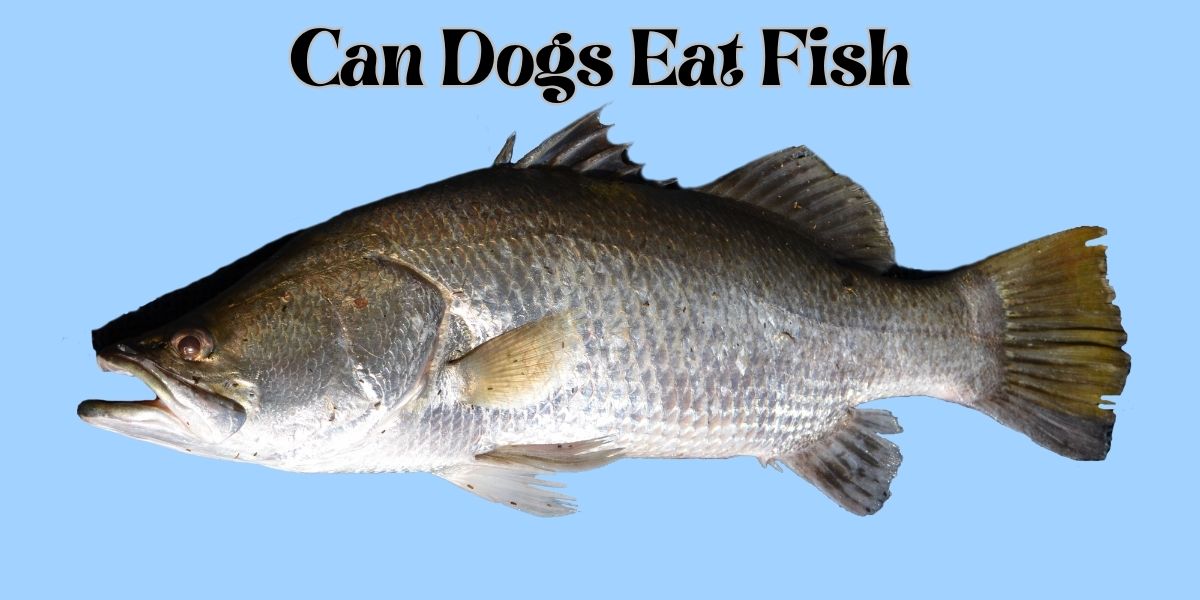Can Dogs Eat Fish?

If you’ve ever wondered whether it’s safe for your furry friend to munch on fish, you’re not alone. In this article, we’ll explore the topic of dogs and fish, taking a closer look at whether dogs can eat fish and what potential benefits or risks it might pose to their health. So, grab a seat and let’s dig into whether this popular seafood item makes a healthy addition to your pup’s diet!

What is the Nutritional Value of Fish for Dogs?
Fish is a highly nutritious food that can provide a range of benefits for dogs. It is rich in protein, omega-3 fatty acids, vitamins, and minerals, making it an excellent addition to a balanced canine diet.
Protein
Protein is essential for dogs as it aids in the growth and repair of tissues, supports muscle development, and contributes to a healthy immune system. Fish, such as salmon and whitefish, is an excellent source of high-quality protein that is easily digestible for dogs.
Omega-3 Fatty Acids
Omega-3 fatty acids are crucial for dogs’ overall health, particularly their skin and coat. These essential fatty acids can help reduce inflammation, promote a healthy skin barrier, and add shine to your furry friend’s coat. Fish, especially oily fish like salmon and mackerel, is a great source of omega-3 fatty acids for dogs.
Vitamins and Minerals
Fish is also packed with essential vitamins and minerals necessary for a dog’s well-being. It contains vitamins D and B complex, which play a vital role in maintaining strong bones and a healthy nervous system. Additionally, fish provides minerals like potassium, magnesium, and selenium, which contribute to various bodily functions, including muscle and nerve function.
Benefits of Fish Consumption for Dogs
Incorporating fish into your dog’s diet can offer several benefits for their overall health and well-being.
Improved Coat and Skin Health
The omega-3 fatty acids found in fish can help alleviate skin irritations, dryness, and itchiness in dogs. By nourishing the skin from within, fish can promote a healthy coat and reduce the risk of common skin conditions in dogs, such as allergies and hot spots.
Joint Health and Inflammation Reduction
Fish, particularly those rich in omega-3 fatty acids, can provide significant benefits for dogs with joint issues, such as arthritis. These fatty acids have anti-inflammatory properties that can help reduce joint inflammation, alleviate pain, and improve overall mobility in dogs. Adding fish to their diet may help support their joint health as they age.
Enhanced Cognitive Function
The omega-3 fatty acids found in fish, specifically DHA (docosahexaenoic acid), have been shown to support brain health and cognitive function in dogs. Incorporating fish into their diet can contribute to improved memory, learning, and overall mental sharpness, making it beneficial for dogs of all ages, from puppies to seniors.
Types of Fish Dogs Can Safely Consume
When it comes to feeding fish to your dogs, there are several safe and nutritious options to consider.
Salmon
Salmon is a popular fish choice for dogs due to its high omega-3 fatty acid content. This fatty fish provides a range of health benefits, including improved skin, coat, and joint health. It is important to note that wild-caught salmon is generally preferred over farm-raised salmon, as it tends to have fewer contaminants and a higher nutrient profile.
Whitefish
Whitefish, such as cod, haddock, or tilapia, is a lean and mild-tasting fish that many dogs enjoy. It is an excellent source of protein and can be a great addition to their diet. Whitefish is generally low in mercury compared to larger fish species, making it a safe choice for regular consumption.
Mackerel
Mackerel is a fatty fish that is highly nutritious for dogs. It is rich in omega-3 fatty acids, protein, and various vitamins and minerals. However, due to its higher mercury content, it is recommended to feed mackerel in moderation and consider other fish options for regular consumption.
Sardines
Sardines are small, oily fish that pack a nutritional punch. They are an excellent source of omega-3 fatty acids, protein, and calcium. Sardines can be fed whole or mashed and mixed with your dog’s regular food. They are generally low in mercury and offer numerous health benefits for dogs.
Tuna
Tuna can be a tasty treat for dogs, but it should be fed in moderation and with caution. While it is high in protein, tuna also contains higher levels of mercury compared to other fish. Feeding small amounts of cooked, fresh tuna as an occasional treat can be enjoyed by most dogs, but it should not be a regular part of their diet.
Precautions and Considerations
While fish can be a healthy addition to your dog’s diet, there are certain precautions and considerations to keep in mind.
Cooked vs. Raw Fish
In general, it is recommended to feed dogs cooked fish rather than raw fish. Cooking fish eliminates any potential bacteria or parasites that could be harmful to your furry friend. Raw fish may also contain thiaminase, an enzyme that can break down thiamine (vitamin B1), leading to a deficiency. Always ensure that fish is cooked thoroughly before feeding it to your dog.
Fish Bones
Fish bones pose a choke hazard and may splinter, causing injury to your dog’s mouth, throat, or digestive tract. Carefully remove all bones from any fish you feed your dog to avoid the risk of choking or internal injuries.
Salt and Seasonings
It is important to avoid adding salt or any additional seasonings to fish prepared for your dog. While plain, cooked fish is nutritious and safe, added salt and seasonings can be harmful to their health. High salt intake can lead to dehydration and other health issues in dogs.
Fish Allergies
Just like humans, dogs can develop allergies to certain foods, including fish. If you suspect your dog may be allergic to fish, monitor them closely after introducing fish into their diet. Look for signs of an allergic reaction, such as itching, swelling, vomiting, or diarrhea. If any adverse reactions occur, consult your veterinarian.
Mercury Levels
Some fish species, especially larger predatory fish, may contain high levels of mercury. Mercury can be toxic to dogs and may lead to a range of health issues when consumed in large quantities over time. To minimize the risk of mercury toxicity, choose fish varieties that are low in mercury and feed them in moderation.

How to Prepare Fish for Dogs
Proper preparation of fish for dogs is essential to ensure their safety and enjoyment of this nutritious food.
Cooking Methods
There are a few cooking methods you can use to prepare fish for your dog. Baking, grilling, or poaching the fish without adding any oils, seasonings, or excessive salt is generally the best approach. These cooking methods help retain the fish’s nutritional value and make it easier for your dog to digest.
Removal of Bones
Before serving fish to your dog, it is crucial to remove all bones. Carefully check for any small, sharp bones that may have been missed during initial preparation. Even tiny bones can pose a choking hazard or cause injury to your dog’s digestive system, so thorough bone removal is essential.
Feeding Portions
When it comes to feeding fish to your dog, portion control is key. Fish should be served as part of a balanced diet, so it is important not to overfeed or rely solely on fish for their nutritional needs. Consult with your veterinarian to determine the appropriate portion size based on your dog’s age, size, and overall health.
Health Conditions and Dietary Restrictions
While fish can offer numerous health benefits, there are specific health conditions and dietary restrictions to consider before incorporating it into your dog’s diet.
Fish Intolerances or Allergies
As mentioned earlier, some dogs may develop intolerances or allergies to fish. If your dog experiences any adverse reactions after consuming fish, such as gastrointestinal upset, skin irritations, or respiratory issues, it is important to avoid feeding them fish and seek guidance from your veterinarian.
Pancreatitis
Dogs with a history of pancreatitis should avoid high-fat fish, such as mackerel or tuna. Pancreatitis is an inflammation of the pancreas that can be triggered or aggravated by a high-fat diet. Opt for low-fat fish options, such as whitefish or salmon, and consult with your veterinarian before introducing fish to a dog with pancreatitis.
Dietary Restrictions
Certain dogs may have dietary restrictions or ongoing health conditions that require a specific diet. If your dog has any existing health issues or dietary restrictions, consult with your veterinarian before introducing fish or making any significant changes to their diet. They can provide guidance tailored to your dog’s specific needs.

Can Fish Be the Main Diet for Dogs?
While fish can be a nutritious addition to a dog’s diet, it generally should not serve as their sole or primary protein source. It is important to provide a well-balanced diet that includes a variety of protein sources and other essential nutrients.
Fish as a Primary Protein Source
Fish alone may not provide all the necessary nutrients required for a dog’s optimal health. It is essential to include other protein sources, such as lean meats or poultry, in their diet to ensure they receive a complete range of essential amino acids.
Balanced Diet
A well-balanced diet for dogs typically consists of a variety of protein sources, carbohydrates, healthy fats, and appropriate levels of vitamins and minerals. By incorporating fish as part of a balanced diet, you can complement their nutritional needs and support their overall health and well-being.
Consulting a Veterinarian
Before making any significant changes to your dog’s diet, it is always advisable to consult with your veterinarian. They can assess your dog’s individual needs, provide specific dietary recommendations, and address any concerns or questions you may have regarding fish or other food choices.
Other Seafood Options for Dogs
In addition to fish, there are other seafood options that can be included in your dog’s diet in moderation.
Shrimp
Shrimp is a low-fat source of protein, calcium, and iodine, making it a suitable occasional treat for dogs. However, it is important to remove the shell and tail before feeding shrimp to your dog to prevent any potential choking hazards.
Scallops
Scallops can be a tasty and nutritious seafood option for dogs. They are high in protein, low in fat, and contain essential nutrients like omega-3 fatty acids, potassium, and magnesium. However, like with any seafood, it is crucial to ensure they are properly cooked and devoid of any seasonings or additives.
Crab
Crab meat can be fed to dogs in small amounts as an occasional treat. It is essential to remove the shell and ensure the crab is cooked thoroughly to eliminate any harmful bacteria. While crab can be a good source of protein and omega-3 fatty acids, it should not make up a significant portion of their diet.
Lobster
Lobster is a delicacy enjoyed by many humans, and, with caution, it can also be shared with dogs. However, it is important to limit their consumption and ensure the lobster is cooked, devoid of any seasonings or sauces, and free from the shell. Lobster meat can be high in sodium, so it should only be given as an occasional treat.
How to Introduce Fish to a Dog’s Diet
When introducing fish to your dog’s diet, it is important to do so gradually and monitor their response.
Gradual Introduction
Start by offering small amounts of cooked fish as part of their regular meals. Monitor your dog for any signs of an adverse reaction, such as vomiting, diarrhea, or changes in appetite. If they tolerate the fish well, you can gradually increase the portion size over time.
Monitoring for Reactions
Keep a close eye on your dog after introducing fish to their diet. Some dogs may experience an upset stomach or develop allergies to specific types of fish. If you notice any concerning symptoms, consult with your veterinarian to assess if fish is suitable for your dog or to explore alternative protein sources.
Conclusion
In conclusion, fish can be a valuable addition to your dog’s diet, providing essential nutrients, such as protein, omega-3 fatty acids, vitamins, and minerals. It offers a range of benefits, including improved coat and skin health, joint health, and enhanced cognitive function. However, it is important to follow precautions, such as cooking the fish thoroughly, removing bones, and avoiding added salt or seasonings. Fish should be part of a balanced diet, complementing other protein sources and dietary necessities. Allergies, dietary restrictions, and individual health conditions should be considered, and consulting with a veterinarian is highly recommended to ensure the well-being of your furry friend. With careful preparation and proper portion control, fish can be a healthy and enjoyable part of your dog’s diet.